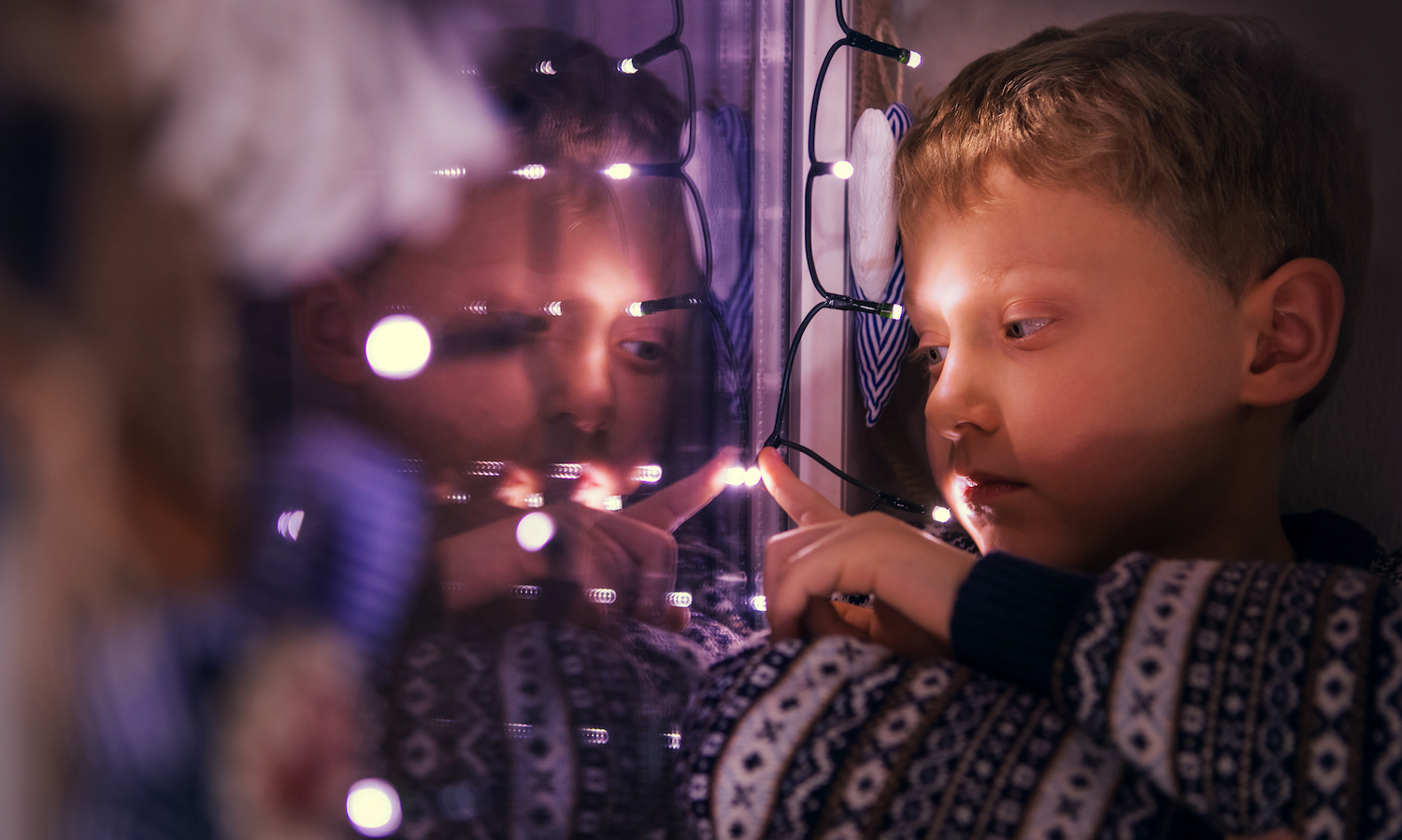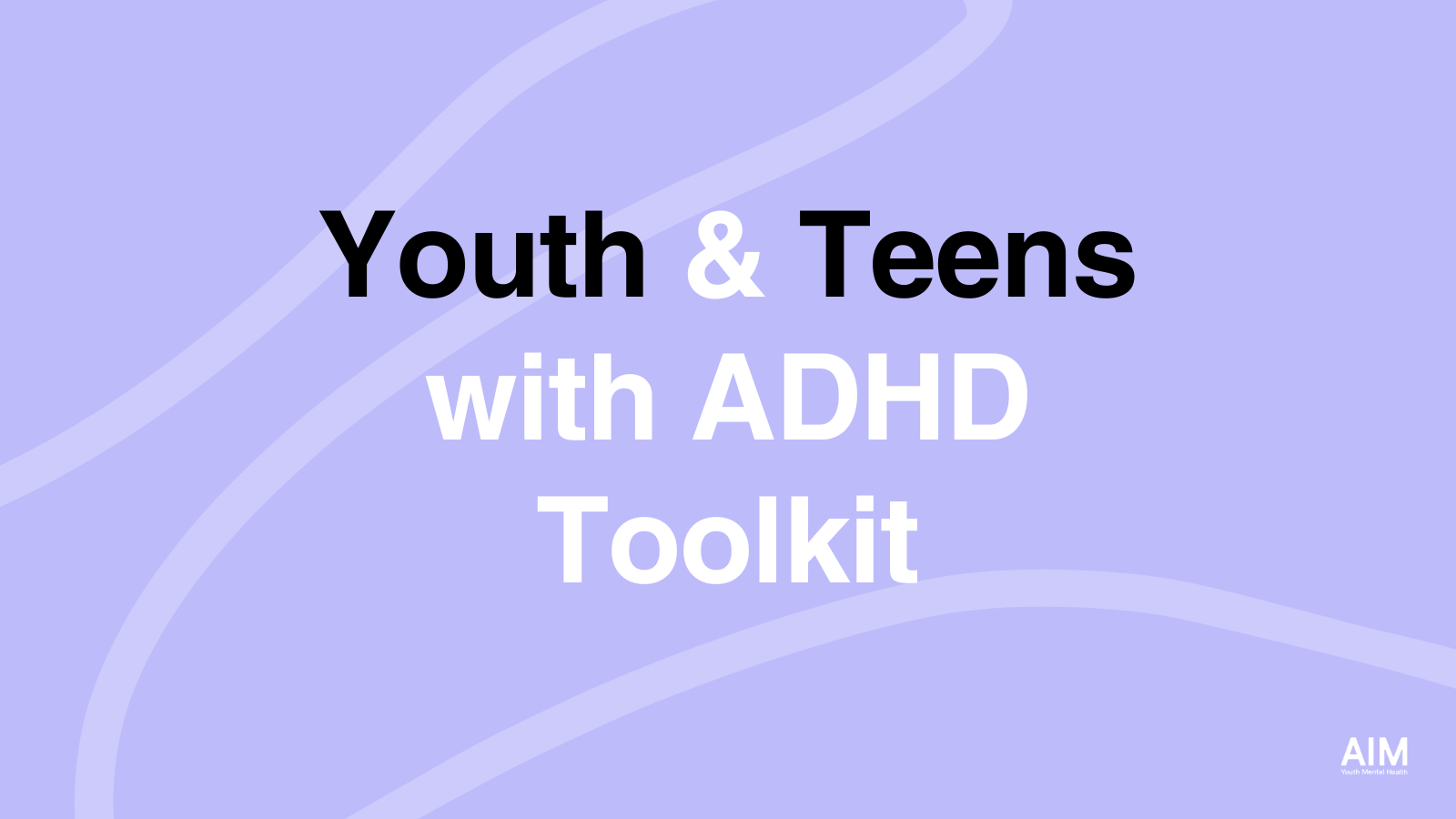If you or your child suffers from depression in the winter months, you may have Seasonal Affective Disorder. Here are some helpful and hopeful ways to cope.
By Jill Suttie
Wintertime can be a lovely time for enjoying cozy clothes, warm fires, and family gatherings. But, if you or your child get depressed because of the shorter days of winter, you may have Seasonal Affective Disorder [SAD for short]—an atypical type of depression that occurs cyclically in the winter months and affects about 5% of the population.
AIM Youth Mental Health Scientific Advisory Board member Edward Craighead, of Emory University, says it’s not clear exactly what causes SAD. But, one theory is that shorter days disrupt our sleep cycle due to our body’s production of melatonin—a sleep hormone that rises at night to help us sleep, but tapers off in the light of day when its’ time to wake up. If there’s little to no morning light, some people could be stuck with too much melatonin in their system and have trouble rousing themselves.
“Sunlight does affect the body in some ways, influencing our natural circadian rhythm or biological clock,” he says.
There are certain factors that put you at risk for SAD, says Kelly Rohan of the University of Vermont, another SAD expert. One is being female, as women are much more likely to suffer from it than men. Living at higher latitudes farther from the equator (where the loss of daylight is even more dramatic) may increase your risk. And, if there is a family history of depression, you could have a predisposition toward getting SAD.
How do you know if you or your child may have it? Craighead says SAD can look very similar to major depression in that it’s marked by low energy, trouble getting motivated, and exaggerated feelings of sadness. But, it has a couple of unusual features; a strong craving for sugary foods and carbohydrates and a strong desire to sleep longer—like, 12-15 hours a day longer. These are the opposite of what you tend to see with major depression, he says, which is often marked by a diminished appetite and shorter sleep cycles.
“The intense craving for these types of food and the longer sleep are quite exaggerated with the people that have seasonal affective disorder and shouldn’t be mixed up with other mood problems,” he says.
However, he cautions parents not to assume their kids have SAD just because they’re eating more sweets or sleeping in. Many children (especially teens) use the winter holidays to catch up on lost sleep during the school year or to indulge in special treats. Unless their symptoms affect their overall functioning—they withdraw from school or won’t participate in social events or activities they usually enjoy—it’s unlikely they have SAD…even though they may still feel sad around the holidays for other reasons.
“I’ve heard a lot of people say they feel down during the holidays, and there may be something about the holidays that’s difficult. But, winter blues are different from SAD and shouldn’t receive the same degree of treatment,” he says.
How to treat SAD
Treatment for SAD can be similar to regular depression, Rohan says, and people who think they have it should probably see a psychologist to have it assessed and decide on appropriate treatment. That may include depression medications (such as SSRI’s or extended release Wellbutrin), bright light therapy, and Cognitive Behavioral Therapy or CBT.
“CBT is a tried and true treatment for depression, which, it turns out, is also effective for seasonal depression and seems to have some lasting benefits—meaning, after the person is treated, they have fewer relapses and less severe symptoms in future winters (relative to people receiving light therapy),” says Rohan.
How can CBT help? It gives people tools for coping with the feelings of hopelessness and helplessness that accompany any depression—including SAD—by teaching them how to think differently about their condition and be less self-blaming, says Craighead.
“If you say to yourself, I have this problem, it keeps coming back, and I’m never going to get over it, that’s creating an irrational, illogical expectation,” says Craighead. “You need to change that fundamental view of yourself as being flawed and that this is something that’s just going to happen no matter what you do.”
Some of the symptoms of SAD can be treated by taking counter measures, too, says Craighead. For example, a craving for sweets may lessen if you or your child eat protein at every meal and balance your diet with fruits and vegetables. Some people benefit from taking Vitamin D supplements, too—but only if a doctor confirms they are deficient, he says.
“It’s fairly common that people with depression have lower levels of vitamin D,” says Craighead. “If you have less exposure to the sun, you may just not produce enough it.”
How to break the cycle of SAD
One thing that’s a bit different about experiencing SAD compared to other forms of depression is that it can be anticipated in advance, says Craighead. People can take steps to help stave it off or at least reduce its intensity, which is good news for those who suffer from it.
“People can plan ahead. You can set up your life and your schedule to do what you can to get more daylight,” says Craighead.
For example, those who may be vulnerable can may try to go outside at lunchtime and walk around, just to get more exposure to sunlight while they can, he says. Or, as Rohan suggests, taking a walk early in the morning may be even more beneficial, as doing so gets light to your retina and wakes up your biological clock, helping correct circadian rhythm issues. Plus, any exercise is good for depression in general—as well as physical health, both researchers say. So, walking can do double duty or even triple duty.
However, Rohan adds, it can be a hard sell for some people (like teenagers) to take an early morning walk. “If walking in the morning outside is not possible, I think you should just get out when you can,” says Rohan.
Another possible way to ward off SAD is sitting under lamps with full spectrum light (mimicking sunlight) for 20-30 minutes each day. Though the evidence on the efficacy of these lamps are mixed, Craighead says, many of his patients find benefit from it.
Rohan finds it’s helpful for people to keep to their usual routines, even as night comes on earlier. Many people with SAD change their lives too dramatically after daylight savings time—for example, not exercising or meeting up with friends after work or school, and, instead, pulling out a blanket and cocooning at home. This is a mistake, she says.
“People who know that they’re vulnerable to this have to work really hard against any tendency to hibernate by pushing themselves to stay active and see people,” she says. “Social activities are natural antidepressants. So, if you are in clubs or do sports or regularly go to a gym, keep doing those things.”
In addition, Rohan recommends that people find fun things to do in the wintertime, rather than pining for summer fun only.
“If all of your pleasurable activities involve things that are summer-specific—like beach combining or growing elaborate gardens in your backyard—you have to find an alternative. You have to find something in the wintertime to enjoy on a regular basis,” she says.
How the holidays can help—or hinder
The approaching holidays can be a mixed blessing, says Rohan. On the one hand, people with SAD may look around and feel that everyone else is happy and wonder, “What’s wrong with me?” And, if they don’t have family or friends around to celebrate with and feel isolated, it can be a “double whammy” for them.
On the other hand, participating in activities associated with the holidays can help activate people with SAD and may alleviate their depression a bit. “Getting out to parties and fulfilling the social obligations of the season can be helpful for some people with SAD,” she says.
The main thing is not letting the short days encourage you to hide at home and binge on Netflix every day. To take charge of your mood, it’s important to stay active and social—to the degree you can.
“There are things you can do—even by yourself—to stay out of hibernation mode and pick your mood up a little bit. Exercising, crafting, or engaging in other hobbies can make you feel naturally good and help you get through,” she says. “Volunteering, when in line with your values, is also good, because it can give you something to do and a sense of purpose.”
So, if you are someone who tends to see your mood plummet this time of year, don’t forget that there’s hope. With proper treatment, you can learn tools to help you manage your depression and get through the season of darkness with more joy—as long as you take it seriously and get the help you need.
“Try to avoid self-diagnosis and self-treatment,” cautions Rohan. “Treatment under the supervision of a trained professional is the way to go.”
______________________
About the Author
Jill Suttie, Psy.D., is a free-lance journalist and a staff writer and contributing editor for Greater Good, an award-winning online magazine published by the University of California’s Greater Good Science Center. A psychologist by training, her articles cover scientific research aimed at uncovering the keys to individual wellbeing and a more compassionate society. She also records music and has two CD’s of original songs that can be heard and purchased on her personal website: jillsuttie.com.





